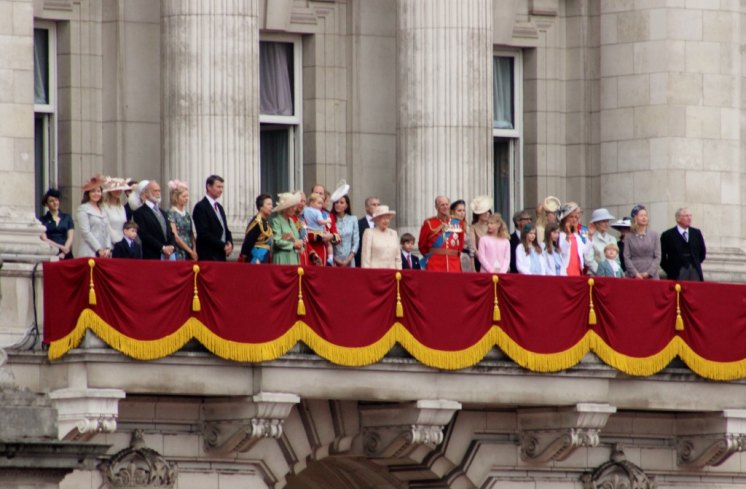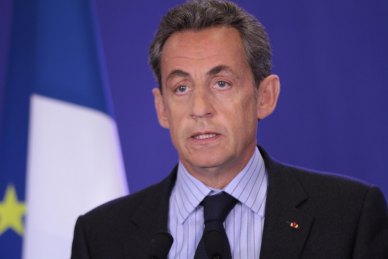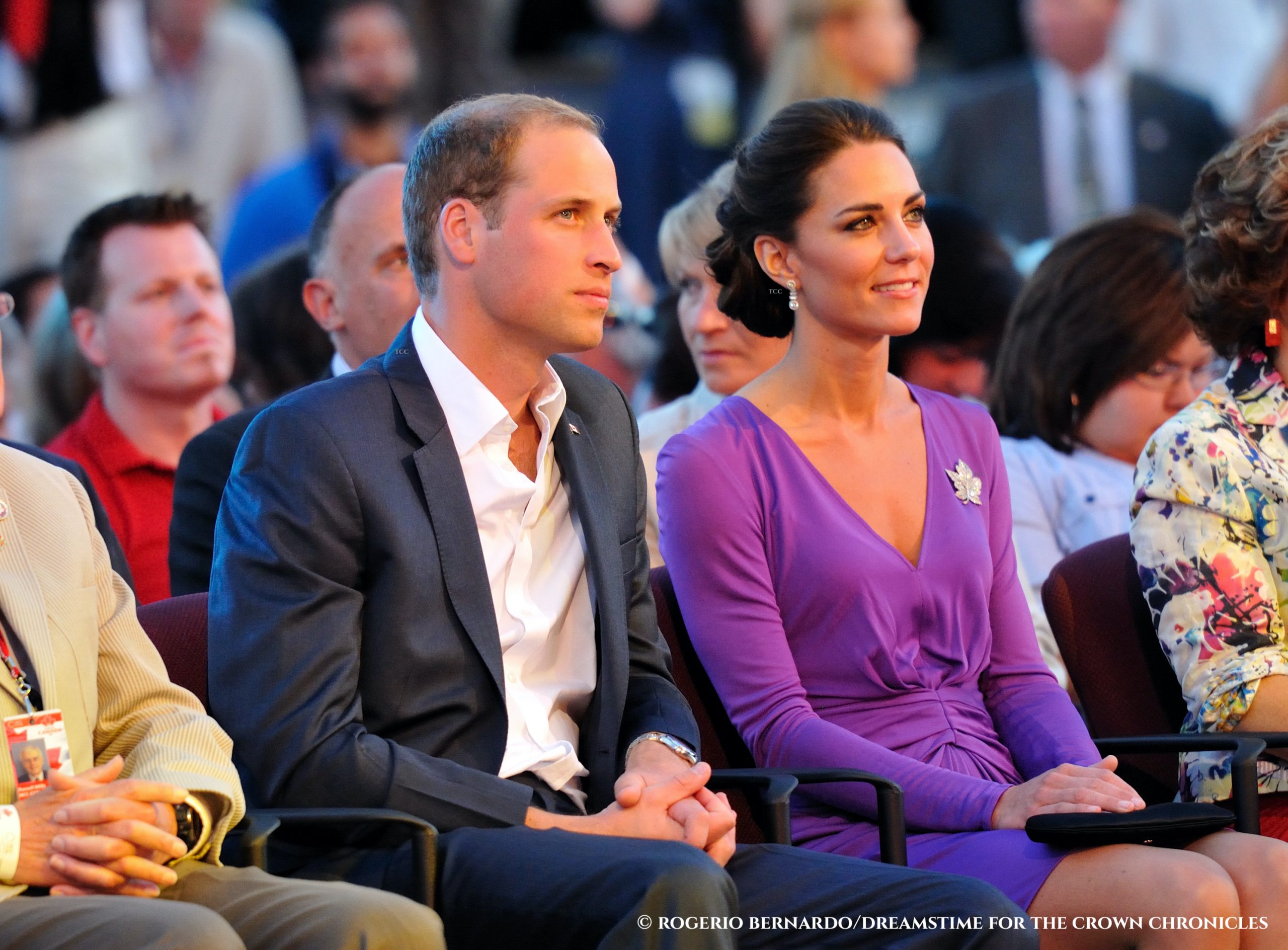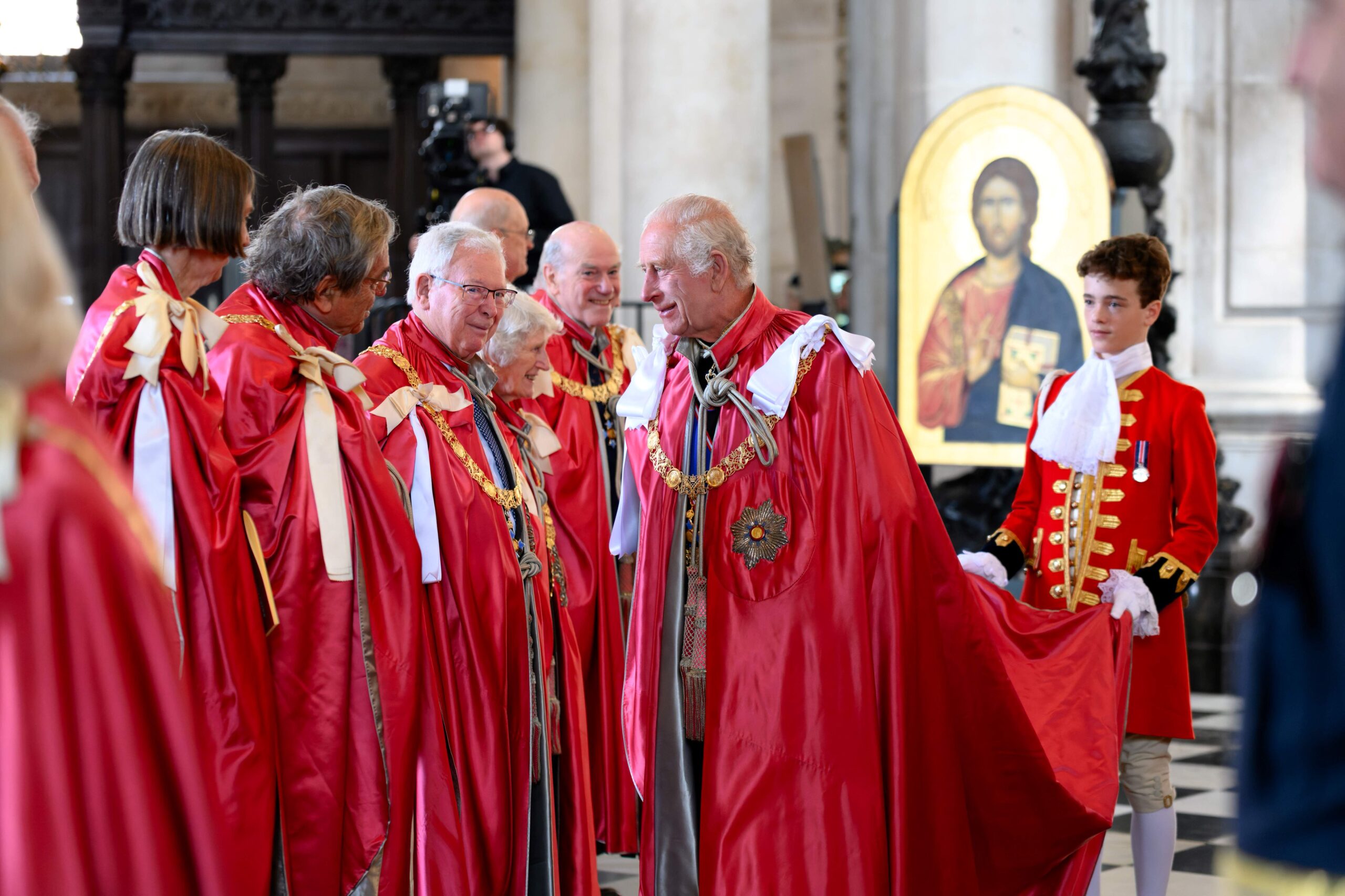This time of year sees the Royal Household release its statement of their accounts, and how the Sovereign Support Grant (SSG) – the money used by The Queen’s household – has been spent.
The 2014/2015 financial year saw the British Monarchy cost £35.7 million – the same as 2013/2014.
Releasing of Royal Finance also sees anti-monarchist organisation ‘Republic’ pipe up, demonstrating the use of its forked tongue, demanding the ‘unjust’ and ‘expensive’ institute of Monarchy should be dismantled in favour of an elected Head of State, to create a United Republic of Great Britain and Northern Ireland.
Well, republicans and Royal-disbelievers, we are here to prove you wrong. It is not in our interests to have a republic, nor do the figures stack up.
Numerous publications state that The Queen is paid for by taxpayers, but we don’t think this is correct. This article will show that our Monarchy is value for money when compared with other presidencies and monarchies across the world.
The Palace (not The Queen) receives a Sovereign Support Grant each year, out of which she pays for the upkeep of the Palaces she inhabits (Windsor and Buckingham), and her 400+ members of staff. In 2014/15 The Queen received £35.7 million to carry out her official work as Head of State, the same figure as that of 2013/14, showing no increase in funding.
The regular monitoring of performance has led to real efficiency savings of 10% from 2009 to 2013, and through reductions in staff costs, travel and hospitality, the real reduction in costs is 50% over the past 20 years. This certainly seems like good value for money to us!
Since Royal finances can be a little complicated, here is a brief explanation of how it is worked out to the figure that Her Majesty receives in the form of the SSG.
The Sovereign Support Grant:
The Queen receives 15% of the profits from the Crown Estate, but from funds two years in arrears. The Crown (not the Monarch) is the legal owner of the Crown Estate, and so currently The Queen is its proprietor. However, she does not run the estate. Most importantly, the Government does not own the Crown Estate either – it is run by an independent board, The Crown Estate Commissioners, who decide how the estate and its properties are managed; they do not consult The Queen.
All profits go to the Treasury, and the Palace receives its money directly from the Chancellor. This payment is 15% of the amount the Crown Estate already pays in to the Treasury to cover this expenditure, from two years previous.
The Palace also pays tax on this 15% income.
This arrangement also means that 85% of profits from the Crown Estate are gifted to the Treasury, and is disseminated into public spending departments such as the NHS, and welfare system; this year it was a whopping £252.6 million to be spent for the benefit of the people.
In addition to the taxes already paid by The Queen, the Palace (Privy Purse) also pays tax on the income provided by the Duchy of Lancaster, The Queen’s private income source, which she is entitled to as Monarch.
In 2010, the Telegraph admitted that the Civil List’s (old royal finance system also linked to the profits of the Crown Estate) ‘£35.1 million is dwarfed by the £226.5 million profit passed to the Treasury by the Crown Estate’.
The Queen herself receives a personal income from The Duchy of Lancaster, an estate which goes back centuries. While the Duchy does not pay tax, the income receivable by the Privy Purse is taxable, after the deduction of official expenditure – thus The Queen is still paying into the Treasury on this income. The Queen has paid tax on this income since 1993.
The Crown Estate and its workings are not widely known by the British public. Here is a little more on the Crown Estate and its unique status as a public body, taken from its website:
“Firstly, we are a net contributor to the nation’s finances, each year sending our profit to the Treasury for the benefit of the nation.
Secondly, whilst we work with the grain of government policy, we are not a delivery vehicle for government policy. So we are not a quango in this sense.
Thirdly, we are a fully independent organisation with a separate legal identity and accounts. The Treasury is our sponsor department, but we are separate from them. Our role is set out in the Crown Estate Act 1961 and not by the government of the day.”
However, it must be made clear that The Queen does not take a salary for her work, unlike some European counterparts.
The cost of official travel for work the Royal Family undertakes is also taken from the SSG payment – this was £5.1 million in 2014/2015, which includes the cost of the The Queen’s Helicopter Flight (the royal helicopter), the Royal Train, and the use of cars for royal engagements. The most expensive form of transport was the Royal Helicopter at £1.6 million.
April 2015 also saw the Royal Mews in Buckingham Palace being taken over by Palace accounts, from the Metropolitan Police.
The Duke of Edinburgh is now the only other member of the Royal Family besides The Queen to directly receive money for official expenditure; he receives a parliamentary annuity of £359,000 per annum.
Under the Civil List, other members of the Royal Family were given allowances for their work. By 2002, there were eight recipients of parliamentary annuities, receiving a combined total of £1.5 million per annum.
After 1993 and prior to 2012, when the SSG replaced the Civil List, The Queen voluntarily refunded the cost of these annuities to the Treasury.
Her Majesty spends over £1,254,000 of her own money on supporting members of her family carrying out engagements on her behalf; this comes from her personal income (the Duchy income, which is taxable), not the SSG.
Sir Alan Reid, Keeper of the Privy Purse (in control of royal finances), said in 2014 that figures have shown that royal funding had fallen by 8% in the last two years, when maintenance costs of Palaces were removed.
Her Majesty is known to prefer simple living; if she had the choice, she would probably live in a smaller house, like Sandringham, with a smaller staff. However, as Sovereign, it is tradition to live at Buckingham Palace, and grand historic buildings such as these require upkeep, and over 400 staff to help run it and her events calendar, in support of the government and her patronages.
Of course, upkeep and maintenance on such important and historic buildings is expensive! Regardless whether or not our Head of State resided in these buildings, they would still have to be looked after and kept in proper working and functional order as historically significant establishments. But since Her Majesty resides in the Palace, she ‘is expected to pay for the upkeep of the occupied palaces using money she is paid from the Sovereign Grant’.
It was estimated that £50 million is needed to secure the buildings; this includes removing asbestos from Buckingham Palace and renewing the lead roof of the Royal Library at Windsor Castle. It is reported that staff regularly use buckets to protect art and antiquities from the water coming in…
In fact, the SSG report this year has since increased this estimate to £150 million in urgent repairs – for Buckingham Palace alone. £13.3 million was spent on maintenance of buildings in 2014/15 a decrease of £0.2 million (1.5%); £2.2 million has therefore been transferred to the Sovereign Grant Reserve for future use of repairs and maintenance.
2% less was spent on staff in 2013/14, and a handful fewer staff were supported in 2014/15. 7% less was spent on travel, to help pay for these necessary repairs, as the SSG would not cover all the work needed for the repair of these buildings.
Prof Matthijs of Ghent University praised the British Monarchy in 2012 as one of the most open about its finances.
Nadine Dorries, MP, has said: “What I am totally against is this out-and-out yearly attack of the Royal Family because of who they are.
“They are great for Britain, the British people love them. I actually felt quite embarrassed listening to Margaret Hodge reel off the list of repairs that need doing to the Royal buildings that we have not funded as a country, because what the Royal Family does for us is beyond explanation.”
British Monarchy vs Presidencies:
It is worth considering how the British Monarchy compares to other Heads of State – and the figures look pretty good!
In 2009, the Polish President cost his people 153 million złotych (c.£26.1 million). In a similar role to The Queen, the President heads the armed forces, but has a say in foreign policy, and nominates the head of the central bank. The President can initiate and veto new legislation, too.
Poland is a smaller nation, with a population of around 38 million, just over half that of the UK, and costs two thirds of that of our Monarchy.
The German President also holds a similar role to The Queen – he has emergency powers to be used in a time of political crisis, and is the figurehead of the German Republic.
In 2010, the President employed 167 members of staff; the President had two state-funded homes (Villa Hammerschmidt in Bonn, and Schloß Bellvue in Berlin), a plane for his sole use, a helicopter, and three cars and a chauffeur. Presidents in Germany are also paid a salary of €199,000 per year (c.£140,000).
The total cost of the German Presidency was, officially, €4.6 million (£3.26 million) in 2010. But this figure does not include the €18 million (£12.7 million) the Bundestag sets aside for personnel and administration costs, i.e. staff. A 2012 figure shows that the office of the President costs taxpayers €30 million (c.£21.2 milllion), and €32 million in 2014.
So The Queen, who employs 426 household staff, spends £18.7 million from the SSG on payroll. She pays almost three times as many staff (who receive accommodation in central London and meals) from the money she is allocated, not from a Government budget.
Former German Presidents are also supported by the State after they leave office, for the rest of their lives – this costs the Germans another €2 million per year (c.£1.4 million).
The Austrian President, a similar figurehead of a much smaller nation, earns €328,000 per year (c.£232,000). Staff and ‘other expenses’ cost an additional of €7.6 million euros (c.£5.3 million) in 2012, which include ‘entertainment expenses’, which may include food bills for dinners and acts for entertainment, though it is not specified.
The Queen spends approximately £2.1 million on Garden Parties, which recognise charitable work and organisations for their contributions, not for the Royals to have a good time. This number also includes banquets and other hosting events, again saving money for the Government, who would still have to host other Heads of State, if the Monarchy did not exist.
In 2010, French President Nicolas Sarkozy set an annual budget for his establishment at €110 million (c.£90 million). In 2012, Sarkozy had 121 cars in his garage, with insurance costs of (converted roughly to) £100,000 and fuel bills of £275,000 per year; he also has an Airbus A330, on which he spent £215 million to refit, having only commissioned it, along with two smaller aircraft, in 2009. These cost £240 million.
Later in 2012, it was reported that the most expensive Head of State in Europe was the new French President, Francois Hollande, with the annual cost of the Elysée Palace – where he lives – reaching £87.2 million
In contrast to Sarkozy’s outlandish spending, The Queen has the Royal Helicopter, the Royal Train, and a small fleet of cars, which are funded from the SSG. There are eight State limousines (two Bentleys, three Rolls-Royces and three Daimlers) and a handful of people carriers. Some of these state cars were gifted to The Queen, and so were not purchased from the Privy Purse. Most of the fleet is collectible and antique, as they were used by the Royal Family in the 1930s and 1940s. The Range Rovers Her Majesty drives and is seen in are funded from her personal income, usually for use in the Scottish Highlands, but also at Windsor, too.
The Labour Union in Italy released figures in 2013 that revealed the Italian Presidency uses €228 million (c.£161.9 million) of public money, with most Italians believing their politicians are corrupt.
What is also clear about The Queen as Head of State, is that people flock to see her. Crowds always line the route Her Majesty will take, and come with their Union Flags and cameras to get a glimpse of The Queen close-up. The German President certainly does not generate the same feelings of excitement that The Queen does… How many people line the streets to see a politician?
The US President is the head of Government in America, as well as the Head of State. A recent expose by a Republican (of the political variety) stated that the Obama family cost the US $1.4 billion dollars (read this report here).
Now assuming this to be true, and factoring in the difference in population of the US to the UK, this is equivalent to £189,038,085 being spent on the Head of State. ($1,4,000,000,000 = approx £888,479,000 . The US population is just under five times larger than that of the UK and so this figure was divided by 4.7).
Still think the Monarchy is expensive?
Not only this, but President Obama has the use of an armoured limousine, 35 military helicopters for his transport, two Air Force One planes (which he must take for official long-haul travel) and the use of Camp David, Maryland, as a secure second home. Not only this, but Presidents since 2001 earn $400,000 per year, as well as having a $50,000 non-taxable expense allowance. His salary is, however, taxable.
When retired, the President will take a pension of around $199,700 (c.£126,000), and can draw a Congressional pension too, if they served in Congress. They are provided with travel funds and franking/stamp privileges. The Presidential family are also entitled to protection by the Secret Service until the death of the former President. There are currently four former Presidents that are entitled to this income and treatment, at the cost of the American people.
The US President also uses Blair House, opposite the White House, to house foreign Heads of State should they visit Washington. The Queen, however, gives her foreign counterpart a room at Buckingham Palace, where there is already room, staff and provisions available, cutting the costs for the Government.
The British Monarchy vs European Monarchies:
 Willem-Alexander of the Netherlands earns a salary of €825,000 per year (c.£593,000) for his work as King, with a poll showing most think he should earn much less, between €250,000 to €500,000. His wife, Queen Maxima, also earns a wage for her royal work, and The Princess of Orange is also entitled to a stipend (grant).
Willem-Alexander of the Netherlands earns a salary of €825,000 per year (c.£593,000) for his work as King, with a poll showing most think he should earn much less, between €250,000 to €500,000. His wife, Queen Maxima, also earns a wage for her royal work, and The Princess of Orange is also entitled to a stipend (grant).
Any Dutch Royal that receives a stipend is exempt from taxes on the stipend and their assets, meaning the Dutch Royals do not pay tax, unlike The Queen and Prince Charles.
The Dutch Royals are further supported by the government, paying €5.72 million for the royal household at the Hague, and they are paid €26.8 million (c.£19 million) to support their work and engagements on top of their salary.
Once again, The Queen does not take a salary, and herself and her family undertake thousands of engagements each year. In 2014, this was 4,083 engagements performed by 15 members of the Royal Family, as seen in the Court Circular.
| 2014 | 2013 | 2012 | |
|---|---|---|---|
| The Queen | 393 | 341 | 425 |
| The Duke of Edinburgh | 273 | 184 | 325 |
| The Prince of Wales | 533 | 537 | 592 |
| The Duchess of Cornwall | 224 | 246 | 276 |
| The Duke of Cambridge | 143 | 62 | 88 |
| The Duchess of Cambridge | 91 | 44 | 111 |
| Prince Harry | 94 | 52 | 61 |
| The Duke of York | 367 | 330 | 436 |
| The Earl of Wessex | 426 | 345 | 431 |
| The Countess of Wessex | 307 | 228 | 324 |
| The Princess Royal | 528 | 454 | 566 |
| The Duke of Gloucester | 280 | 222 | 337 |
| The Duchess of Gloucester | 132 | 132 | 146 |
| The Duke of Kent | 206 | 198 | 239 |
| Princess Alexandra | 83 | 28 | 110 |
| TOTAL | 4089 | 3403 | 4251 |
Tourism and the Monarchy:
Now we move onto tourism…
In 2013, trips to London accounted for half of all foreign visits to the UK, which – while it cannot be certainly stated people visited for the Royal Family – the probability is high that they will be visiting a ‘royal attraction’ on their trip.
It was estimated in 2011 that the Royals generate close to £500 million every year for British tourism. In 2014, visits to Buckingham Palace, Windsor Castle, Holyroodhouse, and Clarence House totalled 2.58 million paying visitors, which is a 6.6% rise on 2013. This brought in £54.99 million to the Royal Collection Trust, which goes to conserve treasures for the nation, such as Rubens’ Don Rodrigo Calderón on Horseback, which, following its restoration, will go on display at Windsor Castle for the public to view.
The Royal Collection Trust also paid £4.4 million of this income to the Privy Purse, to help maintain the Royal Palaces, which we have already established is in need of millions of pounds of work.
In 2012, the Guardian calculate, the Royal Family generated £9.3m in tourism, from the sale of tickets into Buckingham Palace (£18).
Following the birth of Prince George in July 2013, London received 4.7 million visitors from July to September; this was an increase of 19.5% on the same period of 2012, when London was hosting the Olympics, perhaps the most famous sporting event in the world. £11.5 billion was spent in London in 2013.
For the Royal Wedding in 2011, there were an extra 800,000 tourists in London compared to 2010, with an extra 350,000 visitors just in April, the month of the William and Catherine’s nuptials. Finance firm PwC said there was an extra £107 million was put into London’s economy alone, while Verdict said it was a total of £620 million for the British economy; this was supposedly spent on accommodation, travel, night life and shopping, and also factors in the negative impact (days off work and trading) of the Bank Holiday created for the wedding day.
30.8 million foreigners visited the UK as a whole in the same year, an increase of 3.3%, which has been dubbed the Honeymoon effect: despite the wedding being long over, people have wanted to visit the places William and Kate did, such as Westminster Abbey.
But it does seem clear that the royal connection to a place generates interest that translates into cash. A survey conducted in 2010 by Visit Britain found that the top three activities chosen by foreign visitors all involved castles and palaces. 32% wanted to see inside Buckingham Palace, and the other two options involved castles in Wales and Scotland. Arguably, most of the castles and all of the palaces in the UK have a royal connection, making this the money-spinner.
Similarly, The Goring Hotel in Belgravia is where Kate Middleton spent the night before her wedding, before becoming The Duchess of Cambridge. In 2011, the hotel saw a 15.4% rise in sales, and in 2013, finally made a profit of £1.12 million. Fantastic – especially since the hotel lost £1.29 million in 2012.
Now, Prince George and Princess Charlotte are said to have a combined worth of over £5 billion, while Catherine, The Duchess of Cambridge, is worth £4.7 billion on her own! The birth of Prince George brought £247 million into the country at the time of his birth, while Princess Charlotte is already estimated to be worth £3 billion, having brought in £100 million at the time of her birth!
Is the Monarchy good value? Of course it is!
All figures are correct, and reflect the exchange rate, at the time of publication.
Photos: Victoria Howard, Chris Favero, Tom Jutte , UMP
Article heavily amended in May 2021.









1 comment
An interesting read in contrast to the mass media but being a sceptic I would appreciate more backup for the figures quoted!